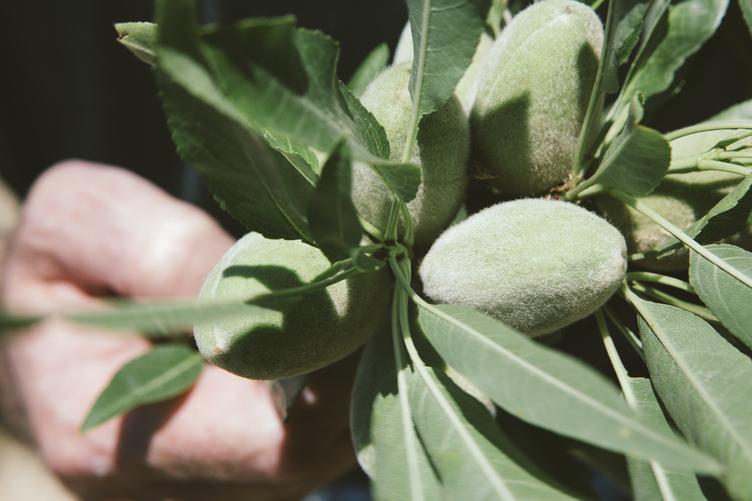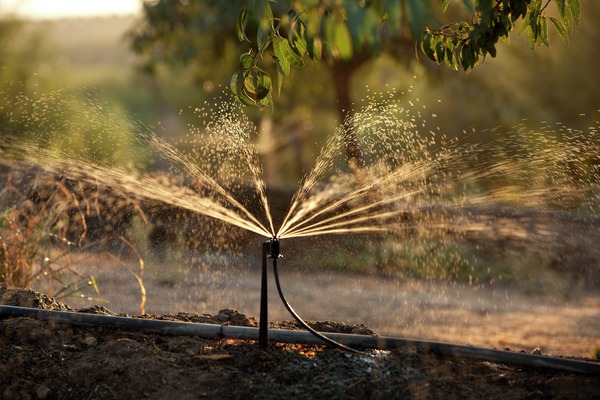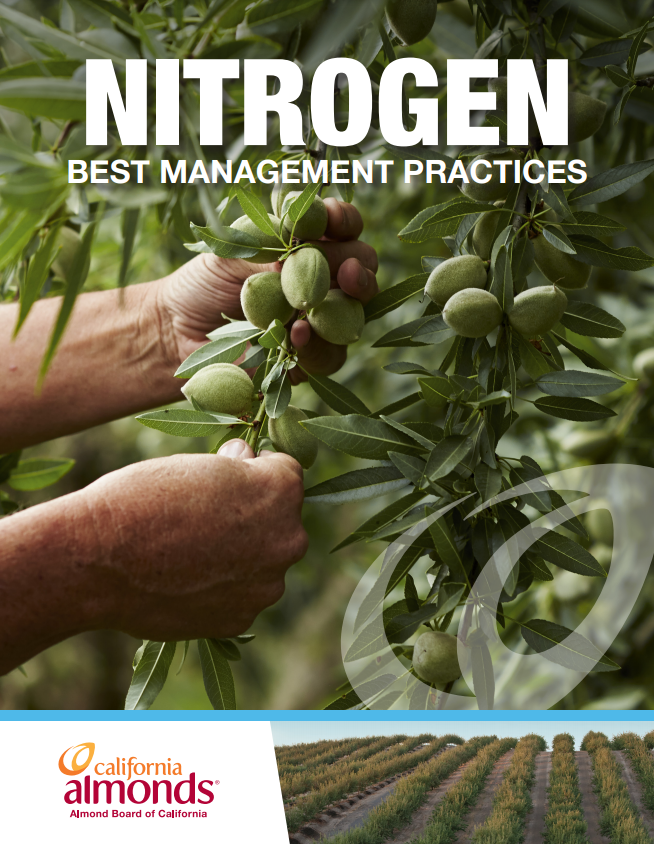
Nitrogen management has major impacts on the productivity of almond orchards, the profitability of growers throughout the Central Valley and the effect of nitrogen on the environment. With the implementation of the Irrigated Lands Regulatory Program (ILRP), every grower is required to implement a management plan that allows for the efficient use of nitrogen fertilizer and reduces nitrogen leaching into groundwater.
To support growers in both their formation of nitrogen management plans as well as their broader understanding of nitrogen management, the Almond Board of California (ABC) developed the Nitrogen Best Management Practices. These practices provide almond growers with an understanding of nitrogen’s role in almond production and guidance on how to achieve efficient, profitable nitrogen management.
“This resource is an excellent example of how years of research, all the way from basic research to applied science, and long-term strategic planning can be combined and communicated to growers in a way that is most helpful to them,” said Sebastian Saa, associate director for Agricultural Research at the Almond Board.
Saa made it clear that these best management practices should serve as a guide to growers; individual management plans should be devised in conjunction with PCAs and other field experts to adequately meet individual orchard’s needs.
Saa and Patrick H. Brown, Ph.D., UC Davis, authored this resource, in addition to Saiful Muhammad and Sat Darshan Khalsa, also of UC Davis.

Excess Nitrogen Affects Productivity
On page two of the guide, its authors elevate the most vital principle surrounding nitrogen management – while you cannot enhance orchard productivity by providing more nitrogen than is needed by the trees, you can harm productivity by applying too much nitrogen.
Efficient, environmentally-sound and profitable nitrogen fertilization can be achieved when growers abide by the 4 Rs of Nutrient Management. These 4 Rs are as follows: nitrogen must be applied at the Right Rate and at the Right Time, in the Right Place, using the Right Source of nutrients. These guidelines help growers succeed in reaching the ultimate goal of effective nitrogen management, which is to apply adequate – but not excessive – amounts of nitrogen so that productivity is optimized and loss to the environment (and wasted input) is minimized. If nitrogen supply is not well managed, nitrogen will be lost from the orchard system, nitrogen use efficiency will be reduced, money will be wasted and tree productivity will be compromised.
In fact, the single most significant case of nitrogen loss can occur when nitrogen moves below the active root zone via leaching. What’s more, a small amount of nitrogen can be lost via gaseous losses and surface runoff, which may occur if excess irrigation or rainfall washes fertilizer and sediment from the orchard surface. Growers are encouraged to read page 4 of the Nitrogen Best Management Practices to learn more about how nitrogen can be lost from the orchard system.
Monitoring Tree Nutrient Status
Beyond information on nitrogen supply, loss and the 4 Rs of Nutrient Management, the Nitrogen Best Management Practices also provide insight and instruction on how to conduct leaf sampling and analysis. This practice is extremely helpful to growers as sampling allows them to determine the effectiveness of their current practices and identify current issues.
Sampling in conjunction with yield estimation can be conducted in April to help predict seasonal nitrogen demand. Then, in July, sampling can be used to monitor nitrogen status and make end-of-year adjustments.
Growers generally collect one combined leaf sample per orchard. However, if the orchard has substantial variability, then the sampling protocol should be repeated in each zone and nitrogen should be managed independently in each zone, accordingly.
For each orchard block or sub-block requiring individual information, growers should conduct the following in April and July (or August):
Collect leaves from 18 to 28 trees per orchard. Each sampled tree must be at least 30 yards apart. A minimum of 100 leaves per sample bag is required. Repeat this process for all orchards or orchard regions differing in productivity, age or soil type. Identify areas with low-yield performance and collect samples from those areas independently.
Combine all the leaves in a single bag. Label all samples with the collection date, field name, cultivar and location within the orchard, when possible. Also, note if foliar fertilizers have been applied.
Submit the leaves to a leaf nutrient analysis laboratory. Retain records for year-to-year comparison.
Growers interested to receive a physical copy of ABC’s Nitrogen Best Management Practices are encouraged to email the Almond Board at industry@almondboard.com with their name and mailing address. Industry members are also invited to visit Almonds.com/NutrientManagement to print or download a digital version of these practices and to access the accompanying Nitrogen Best Management Practices Quick Guide.
Note: Nitrogen application recommendations differ for orchards where Whole Orchard Recycling has taken place. For more information on these recommendations, view pages 7 and 8 of the Nitrogen Best Management Practices.
















